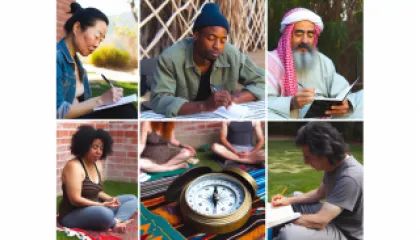Top 10 Strategies to Discover Your Life Purpose
Discovering your life purpose can be a transformative journey that leads to greater fulfillment and joy. It can help individuals understand their passions, strengths, and values, and align their lives accordingly. Whether you're feeling a bit lost or simply want to reassess your current path, these top 10 strategies can guide you.
1. Self-Reflection
Self-reflection is essential for understanding yourself better. This process involves asking yourself meaningful questions about your interests, strengths, weaknesses, and values. You might consider what makes you feel alive, what activities absorb your attention, or where you find meaning. Journaling can be an effective tool for facilitating this self-reflection.
2. Identify Your Passions
Passions are activities that you love and that energize you. They're often things you would do even if you weren't paid for them. Identifying your passions can provide insight into what your purpose might be, as it's often tied to what you love most.
3. Discover Your Strengths
Your strengths are the abilities or talents that come naturally to you. These can give you clues about what your purpose might be. For example, if you have a knack for empathizing with others, your purpose could be related to helping people.
4. Explore Your Values
Values are deeply held beliefs about what is important in life. Understanding your values can help you determine what you want your life to stand for and what kind of legacy you want to leave behind.
5. Set Goals
Once you've reflected on your passions, strengths, and values, setting goals can help you move towards your purpose. These should be specific, measurable, attainable, relevant, and time-bound (SMART).
6. Experiment with Different Paths
Exploring different paths can also help you discover your purpose. This might involve trying out different roles, taking on new projects, or learning new skills. By experimenting, you can learn more about what truly resonates with you.
7. Seek Feedback from Others
Other people can often see things in you that you might overlook. Therefore, seeking feedback from trusted friends, family members, or mentors can provide valuable insights into your strengths and potential.
8. Practice Mindfulness
Mindfulness involves being fully present and engaged in the current moment. It can help you tune into your inner self, recognize your feelings and thoughts, and make more conscious decisions about your life.
9. Find a Mentor or Coach
Working with a mentor or coach can be extremely beneficial. They can provide guidance, encouragement, and perspective as you navigate your journey of self-discovery.
10. Be Patient with Yourself
Discovering your purpose isn't something that happens overnight. It's a journey that requires patience, resilience, and self-compassion. Remember, it's okay to not have all the answers right away.
In conclusion, finding your life purpose is an intimate and personal journey. It involves deep self-reflection, identifying your passions, strengths, values, setting goals, experimenting with different paths, seeking feedback, practicing mindfulness, finding a mentor, and most importantly, being patient with yourself. Each of these strategies can provide valuable insights and guide you towards a more fulfilling and purposeful life.








